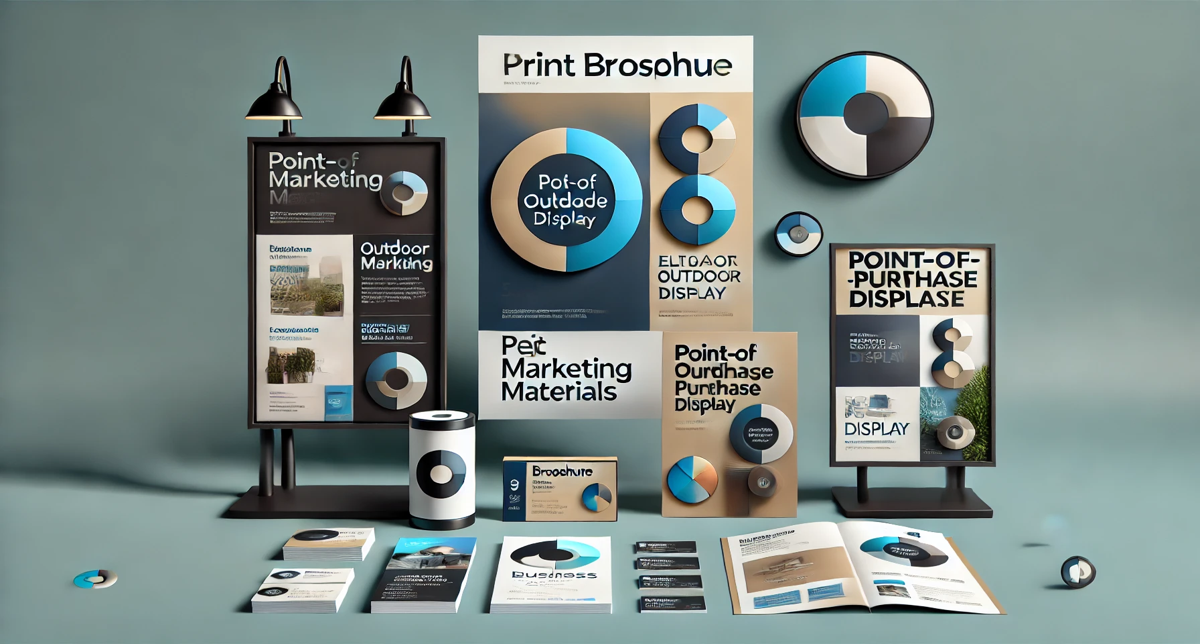
In a digital-first world, marketing executives may question the role of print in their strategies. However, print continues to be a powerful medium, offering a tangible, credible, and engaging way to connect with audiences. While digital marketing is essential, print remains a valuable complement, providing unique benefits that drive engagement and conversions.
One of the most exciting developments is the ability to personalize print campaigns, allowing brands to tailor messages to specific audience segments, improving relevance and effectiveness. Let’s explore how personalized print, alongside traditional tools like signage, brochures, flyers, and point-of-purchase (POP) displays, plays a critical role in modern marketing strategies.
The Tangible Appeal and Credibility of Print
Print’s greatest strength is its tangible nature. Unlike digital ads or emails, printed materials create a physical connection with the audience, making them more memorable. Studies also show that consumers trust print more than digital channels. According to Marketing Sherpa, 82% of U.S. consumers trust print ads more than digital pop-ups or social media ads. This credibility helps print marketing build trust and loyalty, especially in industries where trust is critical, such as healthcare and finance.
The Power of Personalization in Print
Personalization in print marketing has advanced significantly. Gone are the days of simply inserting a name into a mailer. Today, brands can tailor print campaigns to match customer preferences, behaviors, or demographics. This level of customization increases engagement by making the content more relevant to the recipient.
For example, direct mail campaigns can be personalized to feature products or services based on a customer’s purchase history or geographic location. A franchise could send personalized postcards showcasing properties that match the recipient’s previous inquiries, creating a direct, personalized touchpoint that grabs attention.
Signage: Boosting Brand Visibility and Engagement
Signage, both indoor and outdoor, is a cornerstone of brand visibility. From billboards to window displays, printed signage captures attention and drives awareness in ways digital ads often cannot. A bold, well-designed storefront sign, for instance, can draw foot traffic and reinforce brand recognition for a new business in a busy urban area.

Flyers: Cost-Effective and Easily Customized
Flyers remain one of the most cost-effective print marketing tools. They are perfect for promoting events, sales, or new products, and are flexible enough to target specific audiences quickly. With modern printing technologies, flyers can be customized for different audience segments, increasing their impact.
Personalized flyers are also useful in direct mail campaigns, where businesses can include customer-specific discounts or offers. A retail store could send flyers offering special discounts on products that align with the customer’s purchase history, encouraging repeat business.
Point-of-Purchase (POP) Signage: Influencing Decisions at the Right Moment
POP signage plays a vital role in influencing consumer behavior at the point of purchase, particularly in retail and hospitality settings. Strategically placed POP displays, whether at the checkout counter or product aisles, can drive impulse purchases and increase sales conversions.
Personalized POP displays enhance this impact. Retailers can create signage tailored to specific customer segments, promoting products that align with local preferences. For example, a specialty retailer could feature POP displays highlighting popular seasonal items or limited time promotions, making the message more relevant and increasing the chances of a sale.

Print is Here to Stay
Despite the rapid growth of digital marketing, print remains a key component of an effective marketing strategy. Personalization elevates its value, allowing brands to tailor messages that resonate with specific audience segments. From customized brochures and flyers to personalized signage and POP displays, print provides a unique and powerful way to engage customers and drive results.
For marketing executives, incorporating personalized print into broader marketing campaigns is essential. By leveraging the power of personalized print alongside digital strategies, brands can create a well-rounded, impactful marketing presence that leaves a lasting impression.
This blog originally ran on the website of ClaytonKendall.
